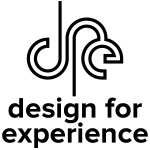You’re not likely to hear a phrase like, “Wow, that government website sure was clear and easy to use.”
Usability and public sector services are not generally found in the same bed (or the same room; or even the same zipcode). The disconnenct has to do with the fact that political, budgetary, security, and compliance realities cause the quality and usefulness of public sector technologies to lag far behind those of the private sector.
Still, every so often, something good comes along and does what it’s supposed to do for citizens in a rewarding fashion.
Even though the official launch of healthcare.gov—designed to get Americans singed up for insurance under the Affordable Care Act—was widely considered a failure and the site continues to befuddle users, an open-sourced version released in June was hailed as a modern departure from typical government sites.
In her 2012 UX Magazine article “Designing to Build Trust,” Ilana Westerman references her agency‘s study of the Enroll UX2014 initiative, which was designed to allow states to “leverage a prototype site and create online exchanges that will provide citizens access to health insurance under the Affordable Care Act (ACA).” Although she found that Enroll UX2012 failed to earn users’ trust, the initiative shows that there are plenty of UX practitioners plying their skills to improve the functionality of websites, software, and embedded systems in the public sector.
There are extraordinary opportunities to use user-centered practices to effect positive changes in governments and societies in the U.S. and countries all over the world. The DfE Public Sector award recognizes digital solutions, applications, services, and other experiences created by or for public-sector entities that have made noteworthy use of user-centered practices to create solutions that deliver real value to citizens.
If you’ve recently utterd the words: “Wow, that government website sure was clear and easy to use,” make your nomination now! It’s also worth noting that the most radical improvement in a consituency’s lives might be a product they never knew existed or ever interacted with, so if you’ve done work in the public sector that has improved usability and made institutions suck less, apply for this award right now.
Image of marble columns courtesy Shutterstock








